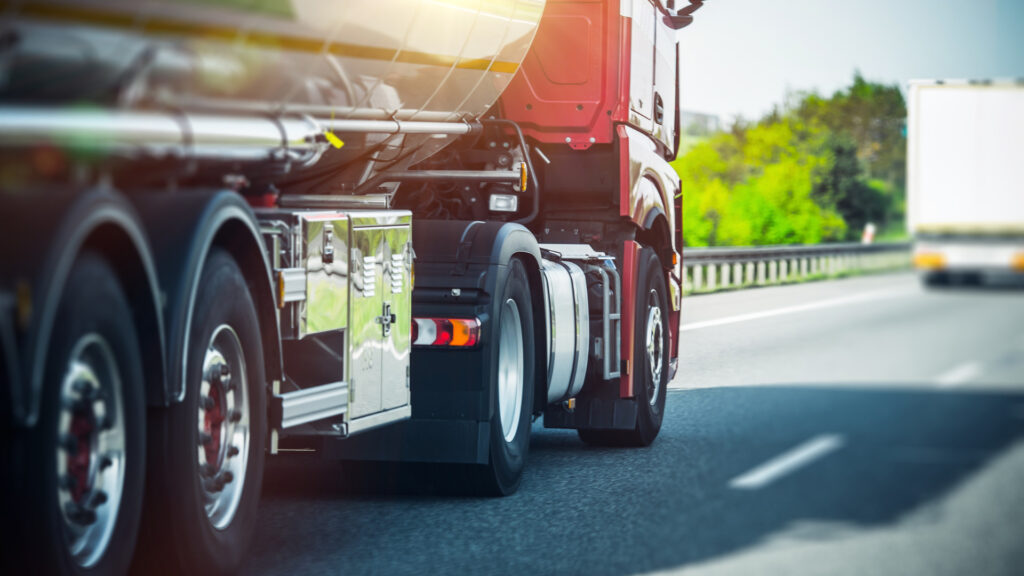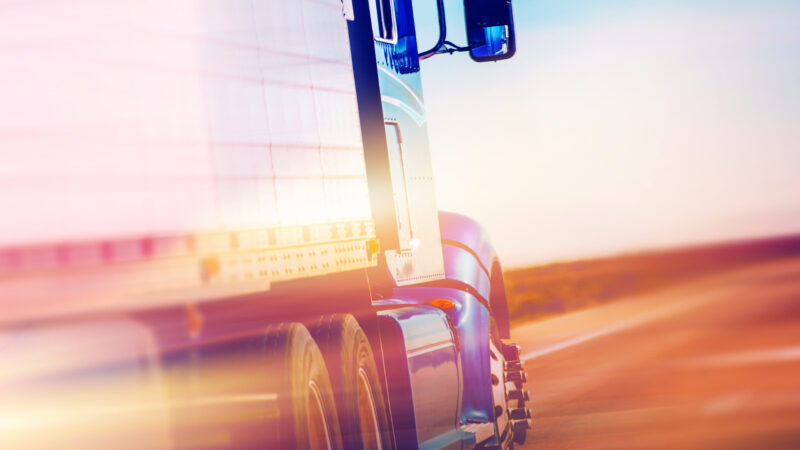Table of Contents Show
It’s common for groups to develop jargon for communicating. The trucking community has a rather extensive list of trucker lingo that they use.
For outsiders listening in on these conversations, it can be incredibly confusing and frustrating trying to decipher the meanings. Learning some of this terminology can help you communicate with others and improve your driving experience and safety.
Today, we’re exploring some common words we think everyone should know in trucker lingo.
So buckle up and come along for a ride!
What Is Trucker Lingo?
Trucker lingo, or CB radio slang, is a language that professional drivers use to communicate with each other over CB radios or on the road. It’s a unique language that includes various slang terms, shorthand phrases, and codes specific to the industry.
They use this language to communicate important information about road conditions, traffic, and safety. It can also help socialize and build camaraderie with others during long hauls.
What Is Trucker 10 Code?
Trucker 10 code, also known as the CB 10 code, is a system of numerical codes used in various industries to communicate quickly and efficiently over radios.
The 10-code system assigns a unique number to common phrases and messages, such as “10-4” for “affirmative” or “message received.”
The system was developed to save time and prevent confusion during communication on the road, primarily when language barriers exist. The 10 code is widely used among truck drivers, law enforcement, and emergency services.
Do Drivers Still Use Trucker Lingo?
Yes, drivers still use trucker lingo today. While technology has advanced, and drivers now have access to smartphones and other communication devices, CB radios are still commonly used on the road.
They’re fantastic options for staying informed about critical issues like road conditions, traffic, and weather. Additionally, CB radios can help drivers socialize and build camaraderie with others.
The use of trucker lingo has become an integral part of the over-the-road culture. Even with technological advances, many continue to use this unique language to communicate with each other.
How Do Truckers Communicate with Each Other?
Truckers communicate in several ways, but CB radios are the most common method. Citizen Band radios are two-way radios that operate on specific channels.
They allow drivers to communicate with each other over short distances, usually up to a few miles. People can use them to share information about road conditions, traffic, weather, and other important information.
In addition to CB radios, some truckers also use smartphones, texting, and other communication devices to stay in touch with other drivers or with their dispatchers.
However, CB radios remain the most popular and reliable method of communication for professional operators.
12 Trucker Lingo Terms You Need to Know
For languages to continue to exist, they must evolve. Trucker lingo is no different, and over the past century, the list of terms has grown considerably.
Some terminology has even worked into pop culture; you may already know more than you think. Let’s look at some common terms we think you need to know.
1. 10-4
The term “10-4” is among the most well-known and commonly used trucker lingo words. It’s a code to acknowledge that a message has been received and understood. It comes from the 10 code system, where “10” is the code for “message received and understood,” and “4” is the code for “affirmative” or “yes.”
When a transporter hears “10-4” over the CB radio, it indicates that the other operator has received and understood the message they sent. This term is often used as a quick and efficient way to confirm the information and communicate.
2. Breaker, Breaker
“Breaker, breaker” is another trucker lingo used by haulers on CB radios to initiate communication or gain the attention of other drivers on the same channel.
The term originated in the early days of CB radios when the word “breaker” was used to request a break in conversation or signal that they were about to start talking.
The term “breaker, breaker” is used to grab the attention of others and let them know that the speaker has an important message or needs to communicate something urgently.
It’s often used at the beginning or when a driver needs to break into an ongoing conversation.
3. Smokey
“Smokey” is a slang term for a police officer, especially a state trooper or highway patrol officer. Many feel that the hats worn by law enforcement resemble those worn by the cartoon character Smokey Bear, the mascot of the U.S. Forest Service.
Hearing the term “smokey” over the CB radio serves as a warning that there is a police officer in the area. The individual likely should slow down and drive carefully to avoid getting a ticket.
You may also recognize this terminology from the famous 1977 movie Smokey and the Bandit.
Keep in Mind: Have you heard of truckers having beef with RVers? Here are a few common reasons why truckers don’t like RVers!
4. 10-20
The trucker lingo term “10-20” refers to a driver’s current location or position. It’s part of the 10-code system and is used as a question to ask for an individual’s current location.
For example, a driver might ask, “What’s your 10-20?” to ask a fellow transporter where they are on the road. The term can also be used as a statement to communicate a hauler’s location, as in, “My 10-20 is on the northbound side of the highway.”
Understanding and using this term can help them communicate their location more efficiently and accurately, especially when time is of the essence.

5. Bear
“Bear” is another slang term truckers use to refer to a police officer monitoring traffic, usually with a radar gun or speed trap. It is often used interchangeably with “Smokey.”
The term often gets used with other words to describe the type of officer or activity they do. For example, “bear up ahead with a hairdryer” would mean a police officer with a radar gun checking for speeding drivers.
6. Alligator
The trucker lingo “Alligator” refers to a piece of tire that has come off a vehicle and is lying on the road.
These large chunks of rubber often resemble the shape of an alligator. These pieces of tire debris can be hazardous, causing drivers to swerve or lose control of their vehicle, and can lead to accidents.
When truckers see an alligator on the road, they often use the CB radio to warn others, saying, “Be advised, there’s a big alligator in the right lane.” This can help drivers know to change lanes in advance to avoid a dangerous situation.
7. Hammer Down
“Hammer down” is a slang term to indicate driving at maximum speed or accelerating quickly. It’s a term that has been around since the early days of trucking when drivers used hammers to adjust the speed limiters on their engines and increase their speed.
The term has since become standard vocabulary and is often used to encourage others to speed up or to indicate that they are driving at top speed. For example, they might say, “I’m hammering down to make up for lost time” or “Keep the hammer down and let’s get there faster.”
Keep in Mind: Now that you have an understanding of trucker lingo, learn how to decode common RV lingo!
8. Copy That
“Copy that” is a common trucker lingo to indicate that they have received and understood a message. It’s a simple and efficient way to confirm the communication.
When drivers hear a message on the CB radio, they might respond with “copy that” to let the other individual know they got the message. For example, they might say, “I need to change lanes. Do you copy that?” The other person might respond, “Copy that. I see you.”

9. Yardstick
“Yardstick” refers to a mile marker on a highway or interstate. These markers are typically placed every mile or half a mile along the road. They indicate distance traveled and measure progress on a long journey.
Drivers often use the term when referring to a specific mile marker on the road. For example, they might say, “I’m about 10 miles from yardstick 150,” to indicate their position on the highway.
Using terms like “yardstick” can be helpful when navigating unfamiliar roads or communicating their location with others. This can be incredibly useful during an emergency or mechanical failure.
10. Double Nickel
“Double nickel” is a term truckers use to refer to a speed limit of 55 miles per hour. This term became popular during the 1970s when a national speed limit of 55 miles per hour was imposed in the United States to conserve fuel during the oil crisis.
The term “double nickel” comes from the number 55, where “double” refers to the repeated digit. For example, a driver might say, “Watch your speed; we’ve got a double nickel coming up,” to remind others to slow down.
11. Chicken Coop
“Chicken coop” is a term truckers use to describe a weigh station or inspection station on the highway. These stations inspect and weigh rigs to ensure they comply with safety regulations and weight restrictions.
The term “chicken coop” is thought to have originated from the cramped and crowded conditions at these inspection stations, which resemble the small and crowded living spaces of chickens in a coop.
They might say, “Be advised, there’s a chicken coop coming up in two miles,” to warn others to prepare to stop and undergo an inspection.

12. Shiny Side Up
“Shiny side up” is a trucker lingo term to wish each other good luck and safe travels on the road. The term refers to the top or exterior of a big rig, which is often shiny and polished. It’s like saying “break a leg” in the theater community.
On the other hand, “shiny side down” refers to a semi that is in an accident or overturned. An individual might say, “There’s a vehicle shiny-side down in the ditch approximately 12 miles ahead.”
Learn the Language of the Road
By learning the language of the road, you can be a safer and more informed driver. You’ll be able to navigate the highways and stay safe.
Additionally, you may even avoid an accident or speeding ticket by listening in to the conversations. While you may not be fluent, knowing these 12 pieces of trucker lingo is a great start.
How many did you already know?






